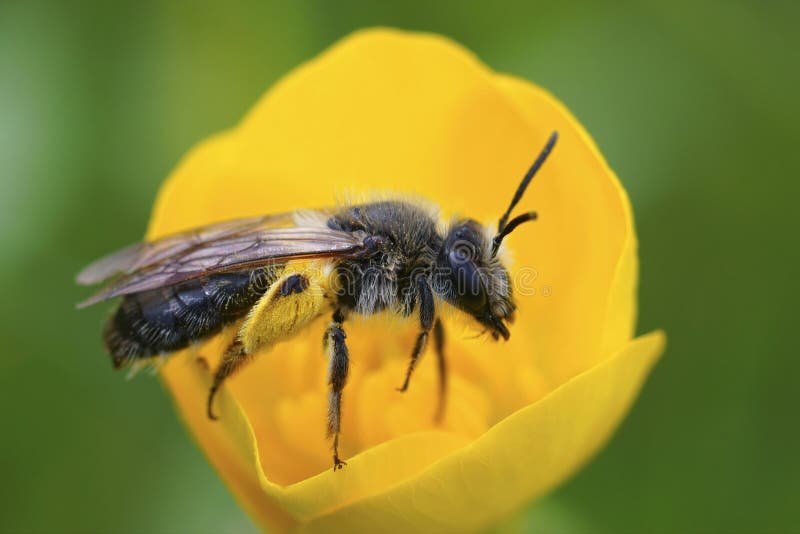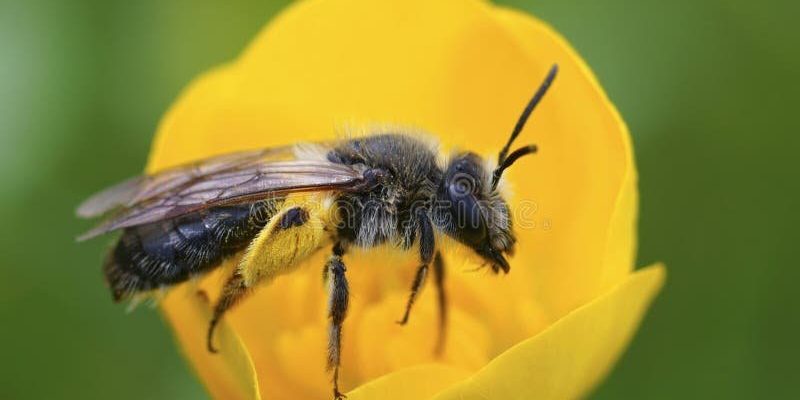
So, what’s the deal with mining bees? They’re solitary creatures, unlike their honeybee cousins. You won’t find them hanging out in large swarms, which makes them a unique addition to your garden or farm. Instead, they go about their business, pollinating plants and helping produce a bountiful harvest—a true asset for those who love to cultivate their greens. In this article, we’ll dive deep into the benefits of mining bees and why they should be a part of your gardening or farming strategy.
What Are Mining Bees?
Mining bees belong to a group known as *Andrenidae*, and there are over 1,000 species worldwide! These bees are usually small and come in various shades of brown and black. Unlike honeybees, they don’t live in colonies. Instead, they prefer to dig individual nests in sandy or loose soil. You might be wondering how they manage to pollinate effectively without the backup of a hive. Well, their solitary nature means they often visit flowers more deeply, allowing them to be excellent pollinators.
Mining bees are most active in the spring, which coincides nicely with the flowering season for many plants. You can find them buzzing around your early bloomers like crocuses, dandelions, and fruit trees. And guess what? They’re often out and about when other pollinators are still hibernating, making them essential for early-season crops.
How Mining Bees Help Your Garden
Let’s get straight to the point: when mining bees show up in your garden, they mean business. Their love for nectar gets them up close and personal with your plants, which helps with pollination. This is crucial for fruits, vegetables, and even some flowers. More pollination often leads to better yields, so it’s a win-win for gardeners.
Here are some key ways mining bees enhance your gardening experience:
- Increased Pollination: Mining bees are efficient pollinators, visiting multiple flowers in a short time.
- Support for Biodiversity: These bees contribute to a diverse ecosystem, which is crucial for healthy plant communities.
- Early Season Activity: They emerge when most other bees are still dormant, ensuring your early-blooming plants get the pollination they need.
Their specific preferences sometimes lead them to visit particular plants more frequently, which helps improve the overall health of your garden too. You might notice that your plants seem happier and more productive when these diligent bees are around.
Benefits for Farmers
Farmers can gain a lot from welcoming mining bees to their fields. Just like in gardens, the role of these bees in agriculture is vital for boosting crop yields. They’re not just helping individual plants; they’re out there doing the hard work that helps whole fields thrive.
Here are some reasons why farmers should befriend mining bees:
- Boost in Crop Yields: Studies show that crops pollinated by mining bees tend to produce more fruit than those that aren’t.
- Cost-Effective Pollination: Unlike honeybees, mining bees don’t require a beekeeper to care for them, which can save you money on pollination services.
- Resilience Against Loss: Relying on diverse pollinator species like mining bees can create a buffer against the loss of honeybee populations, which have been declining in some areas.
By enhancing crop productivity, mining bees can help maximize profits for farmers and support sustainable agricultural practices.
Creating a Mining Bee-Friendly Environment
If you’re excited about inviting mining bees into your garden or farm, there are some simple steps you can take to create a welcoming environment. Honestly, it’s easier than you might think!
First and foremost, consider letting a patch of your garden go wild. Mining bees love to nest in undisturbed soil, so leaving a small area with bare earth—like sandy or loamy soil—can provide them with the perfect home. You might even notice more flowers popping up naturally, which can attract these bees.
Here’s a quick checklist for creating a mining bee-friendly space:
- Plant Native Flowers: Native plants are more likely to attract local mining bee species.
- Avoid Pesticides: These chemicals can be harmful to mining bees. Go organic if possible!
- Provide Nesting Sites: Consider adding a small patch of bare ground or sandy soil to encourage nesting.
You might even think about installing bee hotels if you have the space! These can be made from simple materials and will attract various solitary bees, including mining bees.
Common Misconceptions About Mining Bees
Mining bees can sometimes get a bad rap. Because they’re solitary, some people think they’re harmful or aggressive. The truth is, mining bees are not aggressive and rarely sting. They’re more interested in gathering nectar and pollen than bothering humans.
Here are some common misconceptions:
- Mining Bees are Dangerous: Most people find that mining bees are pretty chill. They are harmless unless provoked.
- They’re Just Like Honeybees: Mining bees are quite different and can often visit flowers more efficiently due to their solitary nature.
- They Don’t Contribute to Pollination: This couldn’t be further from the truth! Mining bees are crucial for several plants, particularly early bloomers.
By understanding these little workers better, we can appreciate the vital role they play in our gardens and farms.
Mining Bees vs. Honeybees: A Quick Comparison
When discussing pollinators, it’s helpful to compare mining bees with honeybees. While both contribute to pollination, they have distinct differences that make each valuable in its own right.
Here’s a quick comparison:
| Feature | Mining Bees | Honeybees |
| Nesting Behavior | Solitary, nests in the ground | Social, lives in colonies |
| Pollination Timing | Active early in the season | Active throughout the growing season |
| Honey Production | No honey production | Produces honey |
| Stinging | Rarely stings | Can be aggressive if threatened |
Both types of bees have their unique strengths, making it essential to have a variety of pollinators in any garden or farm.
The Future of Mining Bees
As the landscape of agriculture and gardening evolves, so do the challenges faced by mining bees. Habitat loss and pesticide use are significant threats. However, awareness is growing, and many people are starting to appreciate the value of these bees.
Here’s how you can help:
- Advocate for Pollinator Awareness: Spread the word about the importance of mining bees in your community.
- Support Local Gardens: Participate in or create community gardens that prioritize pollinator-friendly plants.
- Practice Sustainable Gardening: By adopting organic farming methods, you can help preserve the habitats of these vital pollinators.
The more we learn about mining bees and their benefits, the better equipped we’ll be to support their populations.
In conclusion, I hope you’ve seen just how beneficial mining bees can be for both gardeners and farmers alike. Whether they’re buzzing around your flowers or boosting your crop yields, these tiny creatures play a significant role in our ecosystems. By welcoming them into our gardens and supporting their habitats, we can nurture a healthier, more productive environment for plants, animals, and ourselves. So, next time you spot a mining bee, take a moment to appreciate the hard work they do—they truly are unsung heroes!

